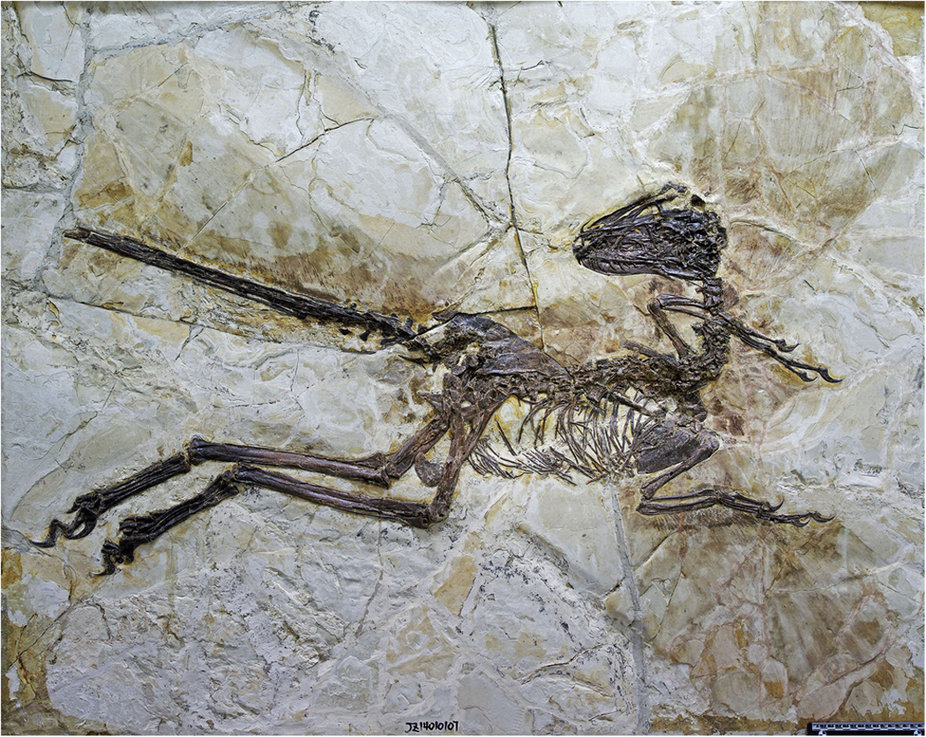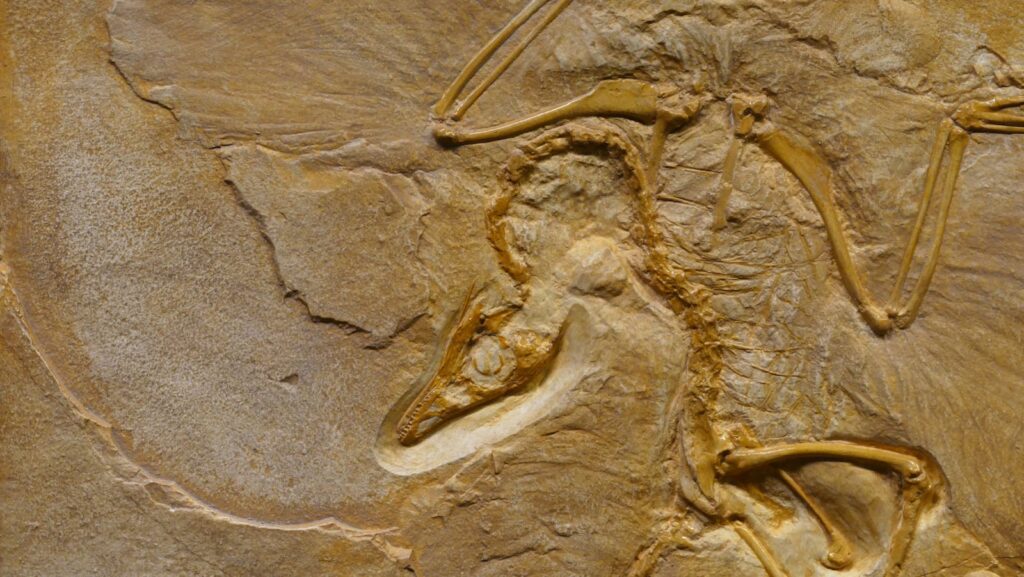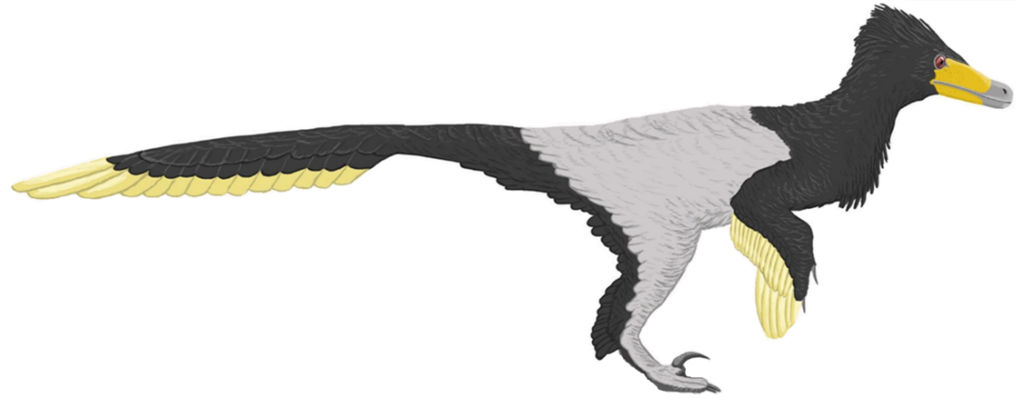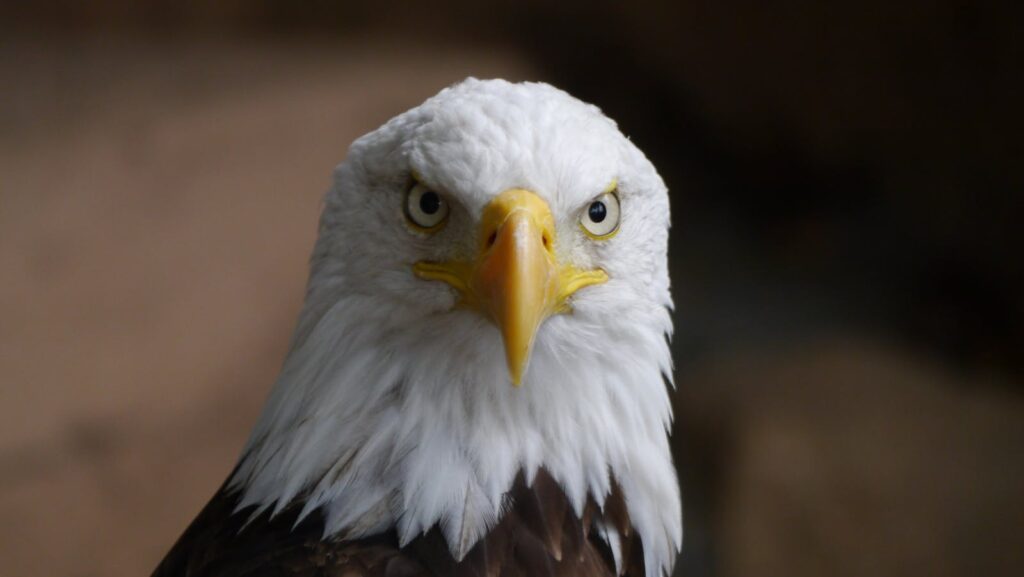The evolutionary history of birds of prey represents one of the most fascinating chapters in avian paleontology. When we observe a modern hawk’s silent, precise hunting techniques or the majestic soaring of an eagle, we’re witnessing behaviors refined through millions of years of evolution, tracing back to their dinosaurian ancestors. The connection between ancient raptors like Velociraptor and today’s aerial predators isn’t immediately obvious to casual observers, but paleontologists have uncovered remarkable fossil evidence establishing these evolutionary links. Through careful examination of skeletal structures, feather impressions, and other preserved features, scientists have pieced together the compelling story of how ground-dwelling dinosaurian predators eventually gave rise to some of nature’s most efficient aerial hunters.
The Dromaeosaurid Connection

The story begins with the dromaeosaurids, a family of feathered, sickle-clawed dinosaurs, including the famous Velociraptor. These dinosaurs, collectively known as “raptors” in popular culture, share numerous anatomical features with modern birds of prey despite being non-flying theropods. Fossils discovered in the Gobi Desert and other locations reveal skeletal structures showing remarkable similarities to modern raptorial birds. The shoulder girdle adaptations, wrist bones, and skull features of dromaeosaurids display evolutionary developments that would later enable powered flight in their avian descendants. Perhaps most telling is the presence of the furcula (wishbone), a feature critical for flight mechanics in modern birds that first appeared in these terrestrial predators as a adaptation for breathing and movement efficiency. The connection between these ancient hunters and modern hawks begins with these fundamental skeletal homologies that persisted through millions of years of evolution.
Revolutionary Fossil Discoveries

The fossil record took a dramatic turn in the late 20th century with discoveries from China’s Liaoning Province. These exquisitely preserved specimens revolutionized our understanding of avian evolution. The Jehol Biota, dating to approximately 120-130 million years ago, yielded remarkable fossils of feathered dinosaurs and early birds preserved with unprecedented detail, including soft tissues and feather impressions. Specimens like Microraptor, a small dromaeosaurid with four wings, provided a crucial evolutionary link between non-avian dinosaurs and true birds. These fossils demonstrated that flight-enabling features evolved gradually among dinosaurs before true birds appeared. The presence of pennaceous feathers—structured feathers similar to those of modern birds—on these non-avian dinosaurs provided compelling evidence that modern bird features began evolving long before true birds themselves. These discoveries created a much clearer evolutionary pathway from terrestrial predatory dinosaurs to aerial hunting specialists.
The Archaeopteryx Milestone

Archaeopteryx lithographica, first discovered in the Solnhofen limestone of Germany in 1861, represents a critical transitional fossil between dinosaurs and modern birds. Dating to the Late Jurassic period, approximately 150 million years ago, this crow-sized creature possessed both dinosaurian and avian characteristics. Its skeleton retained primitive features like a long bony tail, teeth, and three-fingered hands with claws—all dinosaurian traits absent in modern birds. However, it also exhibited unmistakably bird-like qualities, including well-developed feathers and wings capable of at least limited flight. Recent studies of Archaeopteryx’s brain case using CT scanning technology reveal enlarged optic lobes similar to those found in modern raptors, suggesting enhanced visual acuity—a critical adaptation for predatory birds. These findings indicate that even at this early stage of avian evolution, the sensory specializations that would later characterize birds of prey like hawks and eagles were already beginning to emerge.
Feather Evolution and Hunting Adaptations

Fossil evidence has revolutionized our understanding of feather evolution, showing that features we associate with modern birds of prey appeared gradually over millions of years. Microscopic examination of fossil feathers reveals the development of asymmetric flight feathers—a critical adaptation for powered flight now seen in hawks and eagles—first appearing in non-flying dinosaurs. These specialized feathers create aerodynamic lift and maneuverability essential for aerial hunting tactics. Remarkably detailed fossils from China show evidence of feather pigmentation and patterning similar to camouflage strategies employed by modern raptors. The development of specialized wing shapes, with primary feathers that can be spread like fingers during precise maneuvering, appears to have ancient origins visible in the fossil record. These adaptations, initially evolved for other purposes like display or insulation, were later repurposed for the aerial hunting needs of predatory birds, demonstrating how natural selection gradually refined these features over evolutionary time.
Skeletal Adaptations for Predation

The evolution of predatory adaptations can be traced through progressive changes in the fossil record, showing how dinosaurian hunting features were modified into the specialized equipment of modern birds of prey. Fossil evidence reveals a transformation from the large, sickle-shaped foot claws of dromaeosaurids to the specialized talons of raptorial birds. This transition involved a gradual reduction in the number of functional digits and specialization of the remaining toes for prey capture and killing. The evolution of the avian beak from toothed dinosaur ancestors is particularly well-documented, showing how the loss of teeth was accompanied by the development of a strong, hooked beak perfect for tearing flesh. Skull fossils demonstrate the progressive enlargement of brain regions dedicated to vision and movement coordination. The development of pneumatic bones—hollow bones reinforced with internal struts—appears in the fossil record long before powered flight emerged, initially evolving to reduce weight while maintaining strength in ground-dwelling dinosaurs before becoming critical for flight in their avian descendants.
The Evolutionary Bridge of Enantiornithines

The enantiornithines, often called “opposite birds,” represent a crucial evolutionary bridge between early avian ancestors and modern birds, including hawks and eagles. Thriving during the Cretaceous period between 145 and 66 million years ago, these birds were remarkably diverse and globally distributed, with fossils discovered across five continents. Unlike modern birds, enantiornithines retained primitive features like teeth and clawed fingers on their wings, yet they possessed many advanced avian characteristics, including fully developed flight capabilities. Certain fossil specimens show adaptations specific to predatory behavior, including curved talons and hooked beaks remarkably similar to those seen in modern raptors. The shoulder girdle structure of some enantiornithine fossils suggests flight mechanics approaching those of modern birds of prey, with adaptations for powerful wing strokes needed for hunting. Though they disappeared in the mass extinction event at the end of the Cretaceous period, these birds represent an important evolutionary stage in the development of the specialized aerial hunting adaptations seen in modern hawks and eagles.
Fossil Record Gaps and Challenges

Despite remarkable discoveries, significant gaps remain in the fossil record connecting ancient raptors to modern birds of prey. The transition period between the end of the Cretaceous (66 million years ago) and the early Cenozoic era represents a critical evolutionary window, yet fossils from this period are relatively scarce. This “Paleogene gap” makes it difficult to trace the precise evolutionary pathways leading to modern raptor lineages. The preservation bias in the fossil record further complicates research, as the delicate skeletal structures of fossils are less readily preserved than those of larger animals. Modern analytical techniques, including molecular clock studies, suggest that the divergence of major raptor lineages occurred during this poorly documented period. Fragmentary fossils from this era hint at transitional forms but often lack the completeness needed for definitive analysis. These challenges have sparked innovative research approaches combining fossil evidence with developmental biology and comparative anatomy to reconstruct the evolutionary story connecting ancient and modern raptors.
Convergent Evolution Versus Direct Descent

The relationship between ancient raptors and modern birds of prey raises important questions about convergent evolution versus direct descent. Fossil evidence suggests that certain predatory adaptations have evolved independently multiple times throughout avian history. For instance, the hooked beak and sharp talons characteristic of hawks and eagles appear to have evolved separately in different lineages rather than representing a single evolutionary development. Studies of Mesozoic birds reveal predatory specializations similar to modern raptors in groups that left no modern descendants, indicating convergent evolution driven by similar ecological pressures. Detailed analysis of fossil material, including microstructure of bones and feathers, helps paleontologists distinguish between traits inherited from common ancestors and those that evolved independently. The powerful flight muscles and enlarged keels seen in modern raptors appear to have multiple evolutionary origins, as evidenced by varying anatomical arrangements in fossil species. This complex pattern of adaptation highlights how similar ecological niches can drive disparate evolutionary lineages toward comparable solutions.
The Avian Revolution After Dinosaur Extinction

The mass extinction event at the end of the Cretaceous period dramatically reshaped avian evolution, eliminating all non-avian dinosaurs and many early bird lineages. This ecological reset created new opportunities for surviving bird species, leading to an explosive diversification during the early Cenozoic era. Fossil evidence from this period shows rapid experimentation with body forms and ecological niches, including specialized predatory adaptations. The earliest definitively identified raptor ancestors appear in the fossil record approximately 55 million years ago, showing distinctive adaptations for aerial predation. These early Eocene fossils already display the hallmark features of modern birds of prey, including hooked beaks, powerful talons, and enhanced visual structures. Comparative analysis of these fossils with modern raptor skeletons reveals remarkable consistency in certain adaptive features despite millions of years of evolution. The post-extinction radiation of birds appears to have accelerated the development of specialized predatory adaptations, with fossil evidence suggesting that the fundamental hunting strategies employed by modern hawks and eagles were established relatively quickly in evolutionary terms.
Tracing Modern Raptor Lineages

The fossil record provides tantalizing glimpses of the specific evolutionary pathways leading to modern raptor families. Accipitridae, the family containing hawks and eagles, has a fossil record extending back approximately 35 million years, with specimens showing progressive refinement of features specialized for different hunting strategies. Earlier fossils showing proto-accipitrid characteristics date back nearly 50 million years, suggesting a deep evolutionary history. Specimens from the Oligocene epoch (34-23 million years ago) display intermediate characteristics between earlier avian predators and modern hawks, including progressive development of the specialized tarsal structure used for prey capture. Fossils of Milvago brodkorbi from North America represent some of the earliest recognizable falcon relatives, dating to approximately 25 million years ago and showing the beginnings of the distinctive falcon body plan. Comparative studies between these fossil specimens and modern raptors reveal a pattern of gradual specialization rather than rapid transformation, with certain key adaptations, like the supraorbital ridge that protects eagles’ eyes, appearing early in the fossil record and persisting with minimal modification to the present day.
The Origin of Specialized Hunting Behaviors

While behavior doesn’t fossilize directly, anatomical evidence provides insights into the evolution of the specialized hunting techniques employed by modern birds of prey. Fossil wing structures reveal the development of high-aspect ratio wings in eagle ancestors, suggesting the evolution of soaring flight patterns essential for their hunting strategy. The progressive enlargement of talon size relative to body mass, visible in the fossil record, indicates increasing specialization for capturing and killing larger prey. Skull morphology changes tracked through fossil specimens show adaptations for stronger bite forces and specialized feeding behaviors. In some lineages, fossil evidence reveals the development of sexual dimorphism in size, a feature common in modern raptors where females are typically larger than males, suggesting ancient origins for cooperative hunting strategies used by some eagle species today. The appearance of specialized foot structures in the fossil record, including the reversible outer toe seen in ospreys and owls, provides evidence for the development of specific prey-capture techniques. These anatomical changes, preserved in the fossil record, allow paleontologists to infer the evolution of the sophisticated hunting behaviors that characterize modern birds of prey.
DNA and Molecular Evidence Supporting Fossil Findings

While fossil evidence provides the physical record of raptor evolution, molecular studies offer complementary insights that strengthen our understanding of the connections between ancient and modern predatory birds. DNA analysis of modern birds confirms the relationships suggested by fossil morphology, placing birds of prey within a broader evolutionary context. Advanced genetic sequencing techniques have allowed scientists to extract and analyze proteins from some fossil specimens, providing direct molecular evidence of evolutionary relationships that support skeletal analysis. Molecular clock studies, which use DNA mutation rates to estimate divergence times between lineages, align remarkably well with the fossil record of raptor evolution in many cases. These molecular approaches have helped resolve questions where fossil evidence alone was ambiguous, particularly regarding the evolutionary relationships between different raptor families. The combination of fossil and molecular evidence creates a more complete picture of raptor evolution than either approach could provide alone. This integrated research confirms that while modern hawks and eagles are separated from their dinosaurian ancestors by millions of years of evolution, they retain fundamental adaptations first developed in the Mesozoic era.
Future Directions in Raptor Paleontology

The field of raptor paleontology continues to evolve rapidly, with new technologies and discoveries constantly refining our understanding of the connections between ancient and modern predatory birds. Advanced imaging techniques like synchrotron radiation and neutron tomography allow researchers to examine fossil specimens non-destructively at microscopic levels, revealing previously invisible details of bone structure and feather attachment. Ongoing fieldwork in underexplored regions, particularly in the Southern Hemisphere, promises to fill important gaps in the fossil record of raptor evolution. The application of biomechanical modeling to fossil specimens enables scientists to test hypotheses about the flight capabilities and hunting techniques of extinct species, providing insights into functional evolution. Integration of developmental biology with paleontology, studying how modern raptor embryos develop, offers new perspectives on the evolutionary pathways revealed in the fossil record. As these research frontiers advance, our understanding of the remarkable evolutionary journey connecting dinosaurian raptors to modern hawks and eagles will undoubtedly become more detailed and nuanced, further illuminating one of nature’s most impressive evolutionary transformations.
The Fossil Trail Connecting Raptors to Modern Eagles

The fossil evidence connecting ancient dinosaurian raptors to modern hawks and eagles tells a remarkable story of evolutionary adaptation spanning more than 150 million years. From the feathered dromaeosaurids of the Mesozoic to the specialized aerial predators of today, we can trace a path of gradual refinement in predatory adaptations, flight capabilities, and sensory systems. While gaps in the fossil record remain, the accumulated evidence from paleontology, comparative anatomy, and molecular biology creates a compelling picture of evolutionary continuity. The specialized features that make modern birds of prey such effective hunters—keen vision, powerful talons, hooked beaks, and exceptional flight control—emerged gradually through natural selection acting on variations that first appeared in their dinosaurian ancestors. This evolutionary history reminds us that the hawks and eagles soaring above us today represent not just remarkable animals in their own right, but living connections to the prehistoric world of the dinosaurs.




